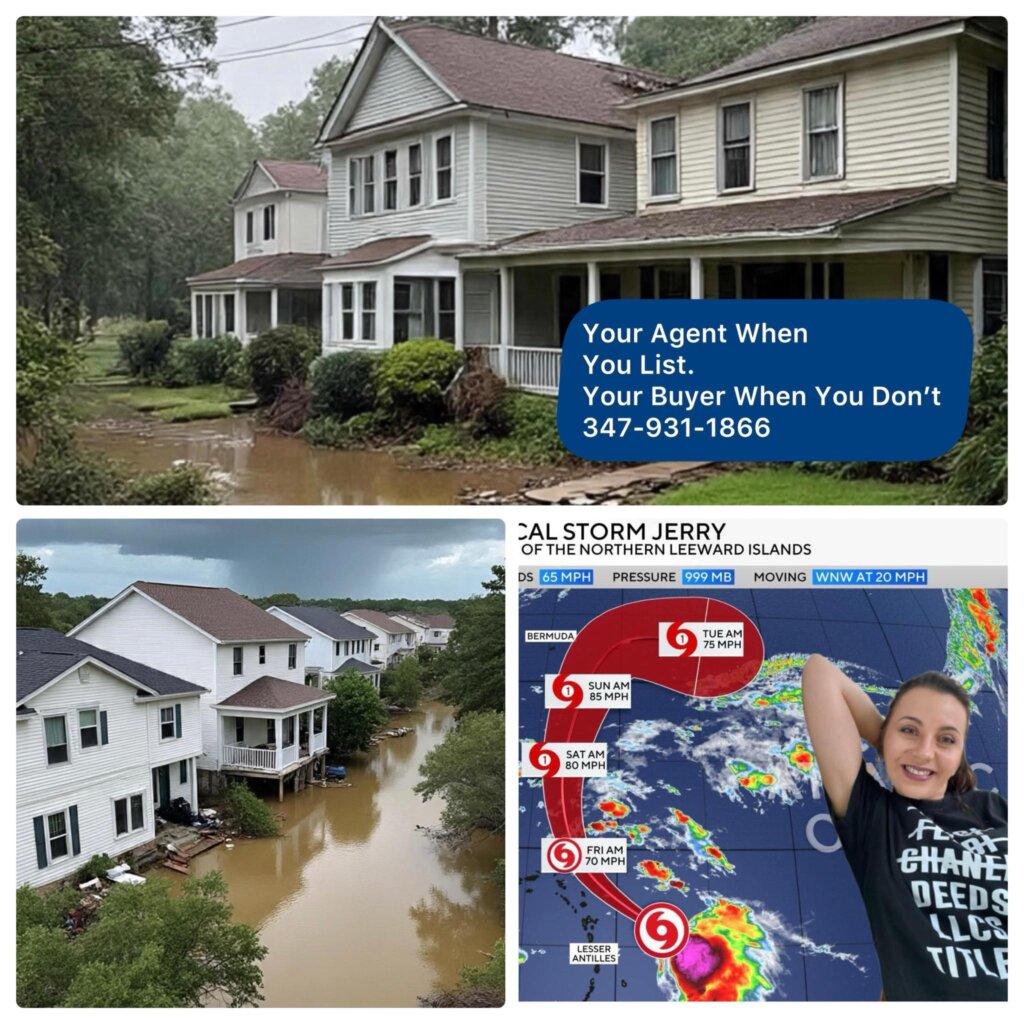
Storms and hurricanes give me mild PTSD, and not without exaggeration.
When Hurricane Katrina slammed the SC Coast in 2005, I was in Charleston watching neighborhoods drown, power grids collapse, and people lose everything overnight.
Fast forward to Hurricane Sandy in New York, 2012; that one hit different. Within just a few hours, water in Brooklyn rose to almost waist level. My apartment and office both turned into indoor pools. We had to evacuate on foot, trekking from Lower Manhattan all the way to the Upper side, because the subway was completely flooded, cabs were useless, and some cars were literally submerged or out of gas. We were in pure survival mode, wading through dark streets with flashlights and backpacks, trying to find high ground and dry air.
Experiences like that don’t fade, they change how you see storms forever. You stop treating hurricane warnings like background noise and start preparing like your future depends on it.
So today, I want to share something that every homeowner should know before the next storm hits, — how to handle your insurance claim after a flood the right way, step by step.
Safety first.
Cut power at the main if water rose inside. Assume standing water = contaminated. Wear boots, gloves, N95. Call utility if unsure.
Stop further damage (policy requires “reasonable steps”).
- Shut off water/gas if needed.
- Tarp roof openings; board broken windows.
- Begin mitigation: extract water, remove wet rugs, start fans/dehumidifiers.
- Keep every receipt — these emergency costs are typically reimbursable.
Document everything before tossing anything.
- Take hundreds of photos + video: wide → medium → close-ups.
- Include measuring tape in shots for waterlines; note each room.
- Photograph serial numbers on appliances/electronics.
- Do a spoken video walkthrough: state date/time, room name, visible damage, waterline height, smells/mold.
- Keep samples (e.g., a square of carpet/pad, cabinet door) until the adjuster sees them.
File your claim ASAP (same day if possible).
- Flood policy (NFIP/private flood): call the number on your flood declarations page.
- Wind/rain penetration (roof, siding, windows): call your homeowners/wind policy.
- Get a claim number, adjuster contact, and ask about advance payment for emergency work.
- Confirm everything by email so you have a paper trail.
Create your loss package (this wins claims).
- Scope list by room: what’s damaged, approximate quantities (sq ft of flooring, linear ft of baseboard, number of cabinets, etc.).
- Contents inventory: item | brand/model | age | condition | replacement cost | where purchased.
- Contractor estimates (at least 1–2 reputable, line-itemed).
- Mitigation invoices + equipment logs (dehumidifier readings, daily photos).
- Your pre-loss photos (from prep) to prove condition.
Meet the adjuster like a pro.
- Be present (or have your agent/GC/public adjuster there).
- Walk room-by-room with your printed scope; point out waterlines, trapped moisture spots (behind cabinets, under tubs), and attic/roof entry points.
- Ask the adjuster to note code upgrades required (permits, GFCI/AFCI, elevation/venting, mold protocol, etc.). Some policies include Ordinance or Law/ICC coverage.
Understand how you’ll be paid.
- ACV vs RCV: ACV = depreciation taken now; RCV = you recover depreciation after you complete repairs and submit paid invoices.
- Checks may include your mortgage company; ask for their endorsement process day one (it can be slow).
- Some policies split dwelling (structure) vs contents (personal property) vs ALE/LOU (Additional Living Expense/Loss of Use). Keep hotel/meal/laundry receipts.
Mold clock is ticking.
- Dry to industry standards quickly (target <16% moisture in wood; <12% is better).
- If walls were submerged, cut 12–24 inches above the waterline.
- Ask for a mold protocol if growth is present; photograph staining before remediation.
Don’t skip the paperwork.
- Your policy may require a sworn Proof of Loss and claim forms. Put claim deadlines on your calendar.
- If the check is short, you can supplement: send additional photos, estimates, code citations, price sheets (e.g., Xactimate line items) and request a re-inspection.
Avoid the landmines.
- Don’t sign an Assignment of Benefits (AOB) unless you fully understand it—it can hand control of your claim to a vendor.
- Don’t demo to the studs before adjuster documentation unless safety requires it. If you must, keep samples + thorough photo/video proof.
- Don’t accept “cosmetic only” if there’s functional damage (swollen subfloor, delaminated cabinets, buckled LVP). Push for moisture readings and manufacturer replacement guidelines.
- Don’t bin receipts. Photograph and file them (cloud folder named by date: “2025-10-12—Mitigation—$327.84”).
Moves most owners miss
- Ask for an advance. Many carriers will release funds for emergency work fast if you request it.
- Price to code. Provide the exact code references your locality requires (permit fees, nailing patterns, underlayment, flood-resistant materials below Base Flood Elevation).
- Include hidden assemblies. Toe-kicks, shoe molding, moisture barriers, underlayment, insulation, vapor retarders, door casings, transition strips, paint to natural breakpoints, cabinet crown — small items add up.
- Vehicles = auto claim. Flooded cars go through comprehensive on your auto policy, not homeowners.
- Disaster aid. If your county is declared a disaster, register at DisasterAssistance.gov and consider SBA disaster loans even for homeowners; they can bridge gaps.
- Public adjuster? If you’re overwhelmed or getting lowballed, interview a licensed public adjuster. Fee is typically a % of the recovery — make sure it pencils.
What to send your insurer (copy/paste checklist)
- Claim number, property address, policy number(s)
- Date/time of loss, cause of loss (e.g., storm surge + wind-driven rain)
- Photo/video package links
- Room-by-room scope with measurements
- Contents inventory spreadsheet
- Mitigation invoices + logs
- Contractor estimates (PDF)
- Temporary housing receipts (if covered)
- Any code/permit requirements cited by your contractor or building department
Insurance pays best when you lead with evidence and speak their language. Be prompt, be organized, and be firm. If you want my free claim packet template (scope + contents spreadsheet + email scripts), comment FLOOD, and I’ll send it over.
Stay safe, stay smart, and let’s rebuild stronger. 💪🌊🏠
